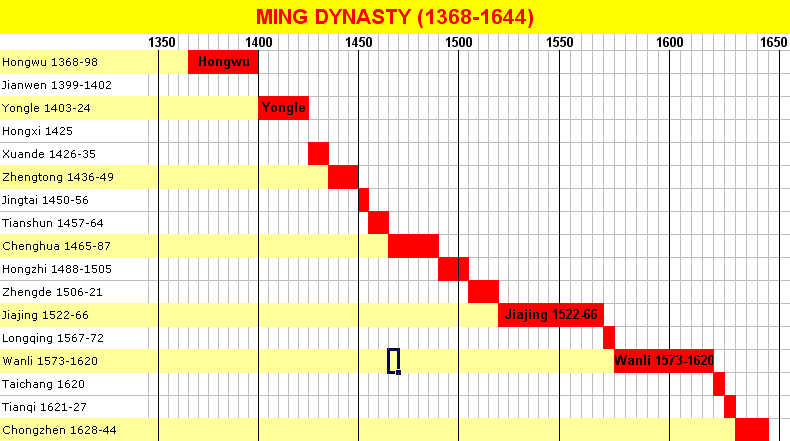

By the 16th Century, weak Ming emperors were often dominated by their advisors. These advisors held a high position in the bureaucratic rank. Castrated men, known as Eunuchs, were employed as advisors for the emperor. Instead of having a prime minister, the Emperor took personal control over the government and was assisted by a Grand Secretariat, also known as a Neige. Each province had its own bureau that was attached to the central government. They investigated official cases of corruption and misconduct. During Emperor Taizu’s reign, an office called the Censorate (Yushati) was made separate to the government. Officials entered top levels of the bureaucracy by passing a government examination. During the Ming Dynasty, the civil service system was perfected. Emperors were autocratic rulers who had absolute power over all aspects of life in their Empire. Īt the time, the Ming Dynasty had the most effective central bureaucracy in the world. Yuanzhang began the Ming Dynasty and took the title of Emperor Taizu, or the Hongwu Emperor. This marked the official end of Mongolian control over China. In 1368, Zhu Yuanzhang initiated a rebellion and captured Beijing. Yuanzhang worked his way up through rebel ranks in 1352 A.D., when he joined a group related to the White Lotus Society. At the time, Yuan militia burned down the monastery in an attempt to stop an impending rebellion. He did not come from an affluent background, and spent years begging for a Buddhist monastery. Zhu Yuanzhang was one of the main leaders of these rebel groups. Various rebel groups began to assemble and prepare for a rebellion. Internal class tension was exacerbated in the 1340s by natural disasters and forced conscription of Han peasants for labour. It could be argued that this hospitality was not shown towards Chinese locals. Non-mongolian foreigners, such as Marco Polo, the Persian Ahmad and the Uighur Sengge, were welcomed as patrons in Yuan China. Many Chinese peasants were enslaved in large numbers, had their lands confiscated, and were excluded from governmental positions. Chinese groups were considered ‘dregs’ in the social order. In Mongolian Law, various groups of indigenous Chinese people, especially the Han, were considered ‘lower class’.

Up until 1368, Mongolian rulers held the Yuan Dynasty in China. Tianqi Emperor, Zhu Youjiao (Xizong) Image SourceĬhongzhen Emperor, Zhu Youjian (Sizong) Image Source Taichang Emperor, Zhu Changluo (Guangzong) Image Source Wanli Emperor, Zhu Yijun (Shenzong) Image Source Jiajing Emperor, Zhu Haucong (Shizong) Image Source Zhengde Emperor, Zhu Houshao (Wuzong) Image Source Hongzhi Emperor, Zhu Youcheng (Xiaozong) Image Source Jingtai Emperor, Zhu Qiyu (Jingdi) Image SourceĬhenghua Emperor, Zhu Jianshen (Zianzong) Image Source Zhengtong and Tianshun Emperor, Zhu Qizhen (Yingzong) Image Source Xuande Emperor, Zhu Zhanji (Xuanzong) Image Source Hongxi Emperor, Zhu Gaochi (Renzong) Image Source Yongle Emperor, Zhu Di (Chengzu) Image Source Jianwen Emperor, Zhu Yunwen (Huidi) Image Source Hongwu Emperor, Zhu Yuanzhang (Taizu) Image Source
#MING DYNASTY TIME PERIOD FULL#
This article will focus on the changes that took place during rule of the following Emperors: Hongwu (first emperor), Yongle (third emperor), Yingzong (sixth emperor) and Chongzhen (sixteenth emperor).īelow is a full list of Ming Dynasty Emperors: The Ming Dynasty had a total of sixteen emperors. The word ‘Ming’ means bright, and is a fitting name for the Dynasty that had many developments during its lifespan. This was the last native Chinese dynasty.
#MING DYNASTY TIME PERIOD SERIES#
China was ruled by a series of dynasties until 1911 and from 1368 to 1644, the Ming Dynasty ruled over China. Chinese civilisation stretches back to least 2000 BC.


 0 kommentar(er)
0 kommentar(er)
